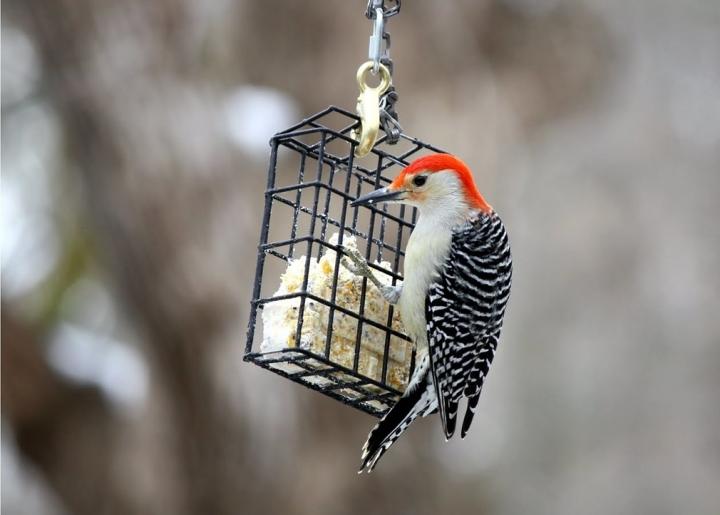
Which Foods Attract Which Birds?
ADVERTISEMENT
Not a fan of suet for some reason around here (southern Illinois) black birds are attracted to it and they keep away a lot of the smaller birds.
We use a lot of black oil sunflower and fruit and nut blend.
As the de facto representative of cardinals, blue jays, finches, bluebirds, chickadees, mourning doves, and many more within a mile radius of my homestead, I maintain 9 feeders, including suet, varieties of seed, fruit, nuts, and meal worms. But the overwhelming favorite of my cardinals is safflower seed.
Here in the lakes region of New Hampshire we have fed the birds year round until last summer. Our area has too many bear that are being habituated to bird feeders and garbage bags left out. We used to put the feeders out only from about 8:00am to dusk from April 1 to December 1, otherwise out all the time while they hibernate. Not so this year, as they came out early and became quite brazen and roamed all times of day without any regard for humans. I will be making and installing a 3" diameter thick wall pipe concreted in the ground 4' deep, with feeders above their reach. if the squirrels and doves, and etc. don't eat what falls to the ground enough I will add a system to catch it all. There are two commercial versions we have seen on the market for this but are very expensive to buy so I'll make my own.
My husband and I love watching the birds and it keeps us busy trying to prevent squirrels eating all the bird seed. We have several feeders on our deck plus suet blocks, and we enjoy watching cardinals, woodpeckers, blue jays, sparrows, mourning doves, chickadees, juncos, and sometimes other birds we haven't identified! We have lots of house wrens and robins in the spring, and starlings!
I have been buying the roasted unsalted peanuts from Costco for several years from my blue jays and squirrels.there is one bird food I found that has a combination of split and pieces of peanuts but they are both raw and roasted together is it safe for the birds to eat raw peanuts?
I just love to feed my feathered friends, and had a ton of feeders on my porch and outside my windows. Unfortunately, the birds are so messy when they eat, and while some of the dropped food is eaten by ground feeders, the mice also found heaven on earth! They were just fat and happy and living under my house, so I had to move my feeders. They feed at night, so you won't know you have a problem until you start finding stashes of birdseed in the strangest places!! So just a warning...
I was buying bird seed at my bird store the food had cayenne pepper in it (but is way more expensive) so now I but good bird seed pour seed into a large bowl and sprinkle cayenne pepper stir well.
Rats and mice squirrels do not like the hot taste. Birds do not feel the heat.
When I took my car to the garage the mechanic brought a plastic container from under the hood that was full of sunflower seeds! I set a couple of mouse traps under the hood that night and caught two fat mice. Now I try to keep the seeds from accumulating too much under the feeders.
I hang squirrel proof feeders in a tree and my pole feeders have baffle to keep squirrels off. I feed black oil Sun flower seeds, peanuts, suet, and a fruit & nut mix. Millet on the ground draws in the Juncos and Morning Doves. Blue Jays devour the peanuts. Cardinals and Chickadees love the sunflower seeds. Downey and red breasted woodpeckers, Gold Finch are also in the mix. Squirrels clean up the spill . I feed all year but only one feeder in the warm months
Most of the time I enjoy watching the many birds that come to my feeders, However, starting last fall, the goldfinches have turned into "bully" birds, descending like a cloud of locusts to gobble up all the food. They crowd out other birds, fight amongst themselves and leave so many droppings that I worry about disease. I have a feeder for finches in addition to two other feeders - one with black sunflower seeds and the other with a mixture. Does anyone have any advice? Also, the birds here don't seem interested in suet for some reason. It just gets wasted. I know it spoils quickly in warm weather, but they don't even eat it in winter. I live in southeast Alabama.









